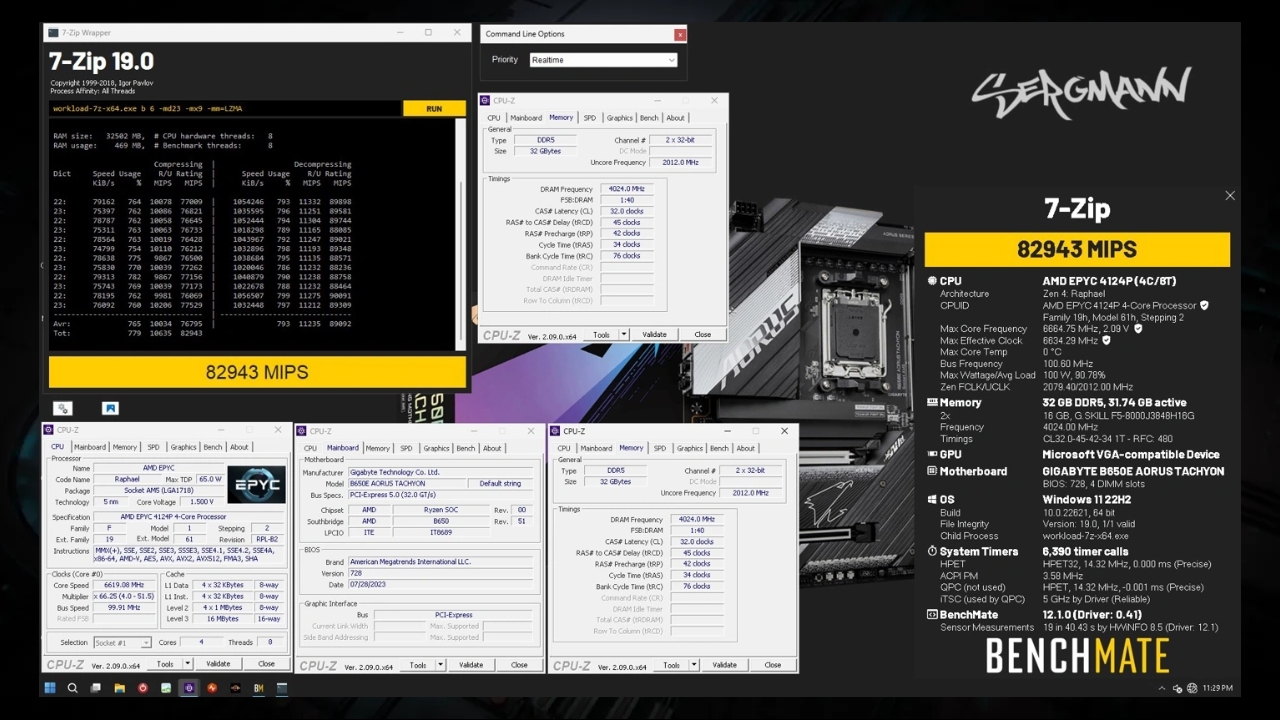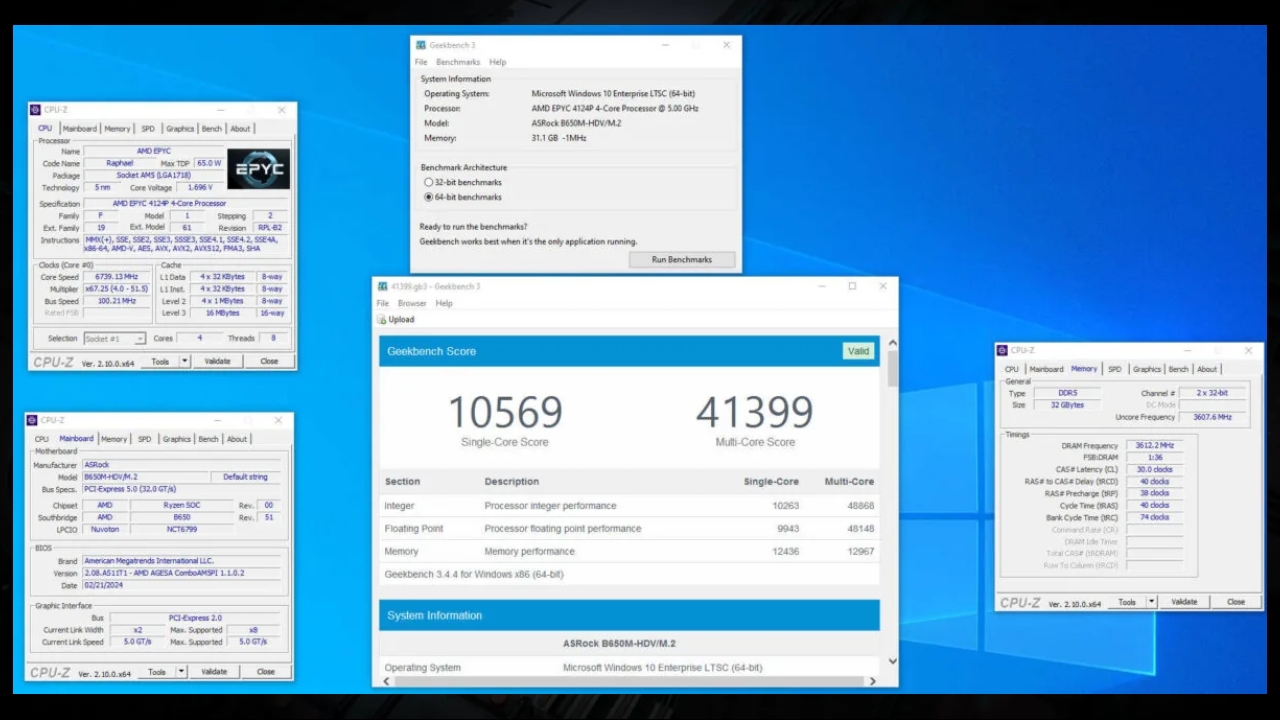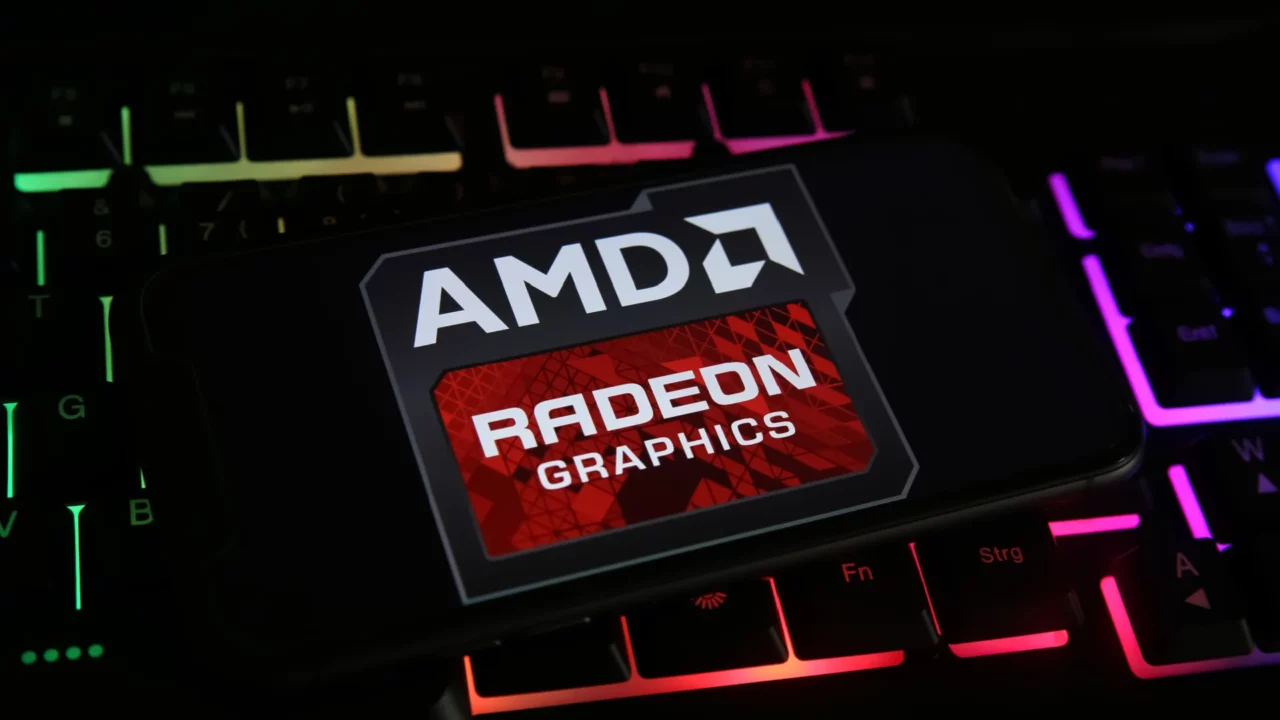In the world of technology, overclocking experiments that push the boundaries have always caused excitement. However, this time the experiment was truly dazzling. A group of technology enthusiasts pushed the AMD EPYC 4124P processor far beyond its standard limits, pushing it to a full 6.7 GHz. And they managed to do this on the B650 motherboard, which is popular among gamers and enthusiasts.
AMD EPYC 4124P: Crazy overclock attempt reaching 6.7 GHz
The EPYC 4124P, which normally runs at 3.8 GHz, is a processor designed for servers and low-cost small business solutions. However, this ordinary processor was boosted to incredible speeds with the help of liquid nitrogen. Such cooling methods keep the processor’s temperatures under control, ensuring stability during overclocking. Of course, such a cooling method is not for everyday users; it is a tool for those who want to test the limits of performance.

Features of EPYC 4124P
This processor is part of AMD’s EPYC 4004 series processors used in the server world. The processor, which runs at 3.8 GHz as standard and can reach a maximum of 5.1 GHz, has a quad-core structure. However, this test showed that the processor can do much more. In order to push the processor to 6.7 GHz, not only a powerful motherboard was required, but also a customized BIOS. However, these details have not yet been fully shared.

Why is overclocking attempted?
These types of extreme overclocking experiments, although not directly appealing to everyday users, are important in terms of showing how far the boundaries can be expanded in the world of technology. These tests, especially those conducted with extreme cooling methods such as liquid nitrogen, are considered as laboratory experiments to discover the limits of processors. The success achieved in this experiment proved how high performance even a quad-core processor can show.

If this test can be made stable and repeated in daily use, processors like the EPYC 4124P could be a great option for those looking to build low-cost but high-performance systems. Who knows, maybe such tests will become more common in the future and every user will be able to benefit from such speeds.
What do you think about this? You can write your opinions in the comments section below.













